Day 1 Take Off
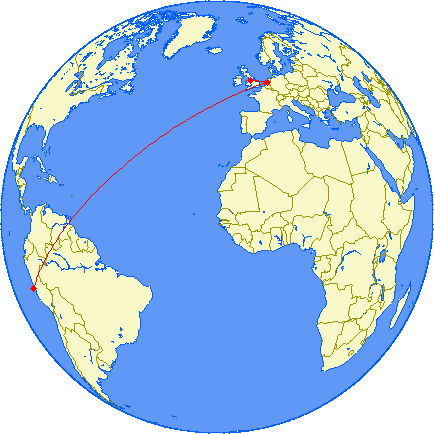
6am take off from Manchester to Amsterdam then a short wait for our flight to Lima. There was plenty of entertainment on board and for some reason we were given seats with nobody in front of us.
We are 6 hours behind the UK. Transfered to Hotel Melia and just a question of staying up for a snack in the bar before crashing out after a very long day.
Peru is bordered in the North by Equador and Columbia, towards the East By Brazil and Bolivia and Chile to the South. On the West is the Pacific Ocean which is the only neighbour they have never been to war with.
Lima is situated on the banks of the Rio Rimac with the peaks of the Andes Mountains lying to the east and the Pacific Ocean to the west. Founded in 1535 by the conquistador Francisco Pizarro, the city was the focus of political, economic and social power in the Spanish colonial empire. "The City of Kings" was built in the grand style of aristocratic Spain with splendid and ornate architecture, large plazas and broad avenues.
Day 2 Lima
Morning tour of colonial Lima Between its foundation in the 1500's up to the 1900s. I shall spell that for you phonetically, that is L Lima, oh well, never mind.
The weather here is remarkable. Only twelve degrees south of the equator but it never rains. The freezing Humbolt Current coming up from Antarctica causes a mist to form. This mist is somewhat like rain and causes high humidity in the Summer, however not today! We are blessed with blazing Spring sunshine and it is quite hot while at the same time a cooling sea breeze is refreshing. Our tour is quite unusual as we visit a private house which has been in the same family since the time of Pizarro. However none of us were expecting the sight of thousands of bones on view in the catacombs of the Cathedral. For centuries all and sundry were pleased to be buried naked on top of each other in a process overseen by the monks who used quicklime to help nature take its course. The result is massive graves full of bleached bones.
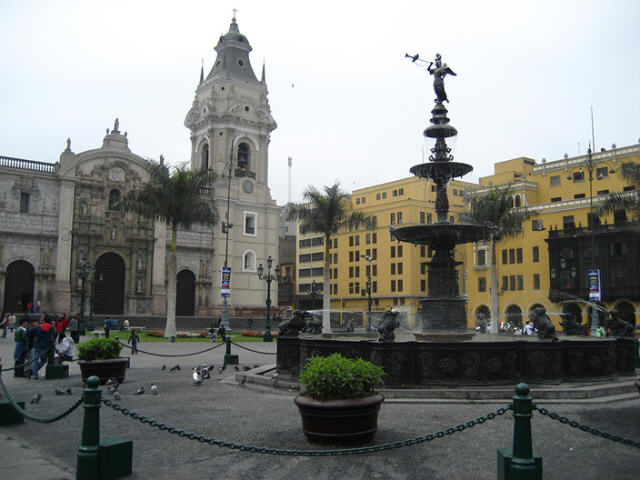
The centre of Lima
For the first time in over ten years Peru is taking a census and they have chosen tomorrow to do it. That means that drinking alcohol is forbidden today, but this does not apply to us although we will be counted in the census.
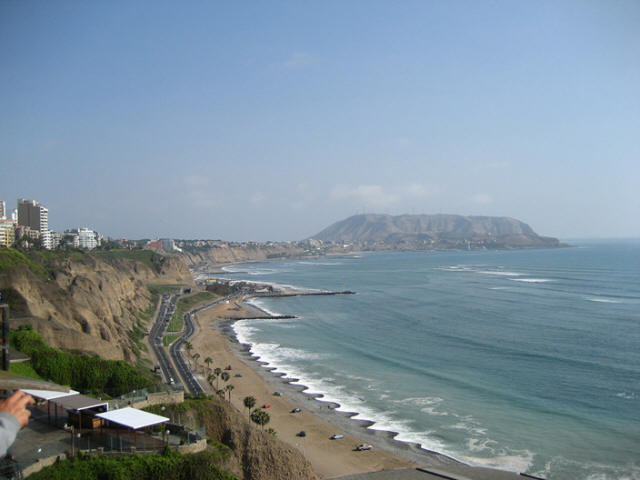
Miraflores district
We ventured off in the afternoon to the beach area known as Miraflores. We found a cafe for lunch and it had a TV so Liz asked if they would put the Rugby World Cup Final on. No problem and we saw we were 6-3 down after 20:07 minutes. Well actually we noticed the clock was not moving and it was saying this was the World Cup 2007 but we managed to stay almost to the end although it involved ordering a chocolate pudding and a second beer. The place reminds us of Puerto de la Cruz in Teneriffe, the only difference being there are no Peruvian musicians playing Pan Pipes here.
Day 3 Fly to Cuzco
Hidden in a valley high in the Andes Mountains, Cuzco was the capital of the mighty Inca Empire. Located at an altitude of 3,310 metres, it is one of the most beautiful and enchanting cities in South America with outstanding natural scenery, ancient ruins and colonial architecture. The Spanish conquistadors tried to recreate the city in the grand colonial style, but even today almost every central street has remains of Inca walls, arches and doorways and the character of the city remains mysteriously Inca.
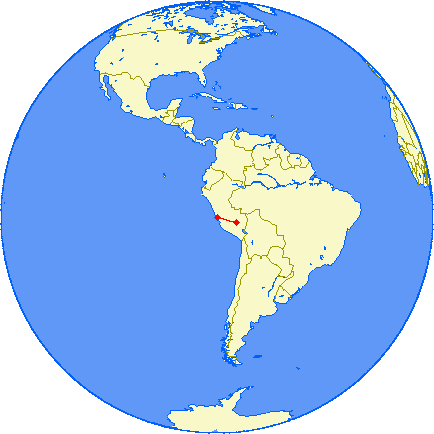
Because of the census our flight was brought forward. The early 04:00 start was not too difficult to cope with given that we have not fully adjusted to the time difference. As the aircraft doors opened we felt a feeling of light-headed dizziness. We remembered to walk slowly through the airport and the feeling of slight breathlessness is all we have suffered so far except for some pins and needles in toes and fingers at first. We checked in to the hotel at about 08:30 and had another breakfast. Then, we went to be counted at the census where we were issued with papers which allow us to move around today.
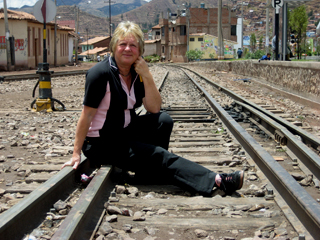
Cuzco Railway Station
Everything is closed due to the census and we expect it all to open at 18:00. We are advised to rest for a few hours after arrival anyway to become 'acclimated'. So I have process some photographs and caught up with this blog. It is wonderful here, bright sunshine and clear mountain air.
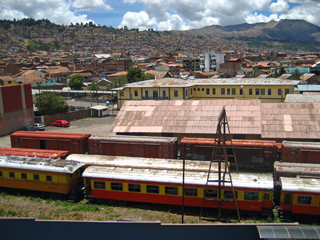
View from out hotel room
We are slap bang in the centre of town. You may need to use the scrollbar at the foot of the page to view day four onwards.
Day 4 Excursion
There are thirteen of us on our tour an we all agree that the main square in Cuzco is a magical place. The square is surrounded by restaurants but we have yet to find the local KFGP.
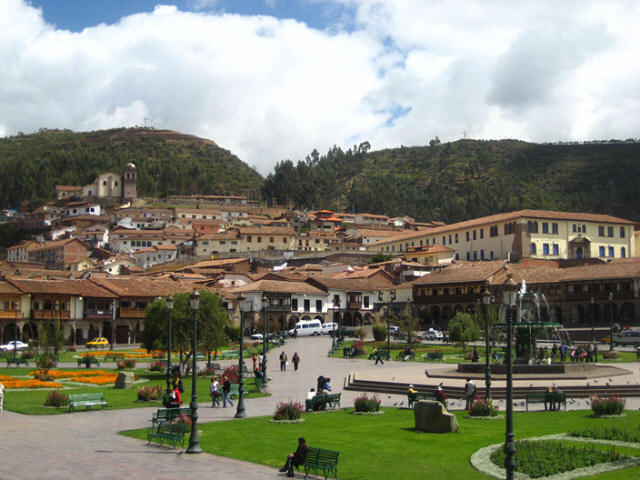
Our tour begins at Qorikancha the Inca temple of the Sun extensively built over in the 17th century by Spain. As we enter the buildings the impending thunder and hail storm arrives and drenches the city. Our guide seems to take it in his stride but we rush over to the balcony, oblivious to the historical treats, to watch the weather.
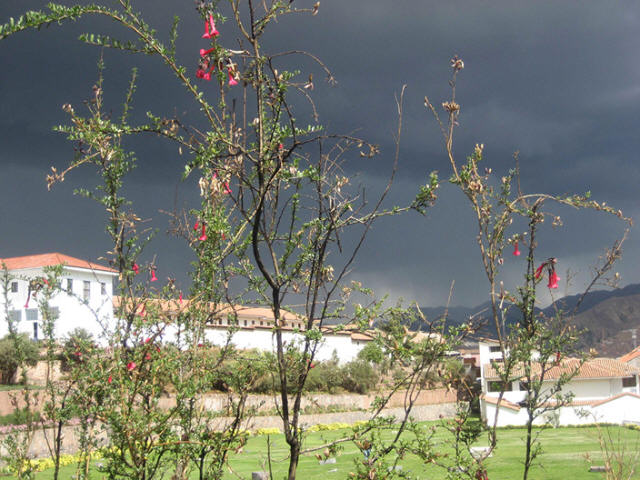
We have gone from blazing midday sun to 3 inches of snow in 20 minutes. It soon clears.
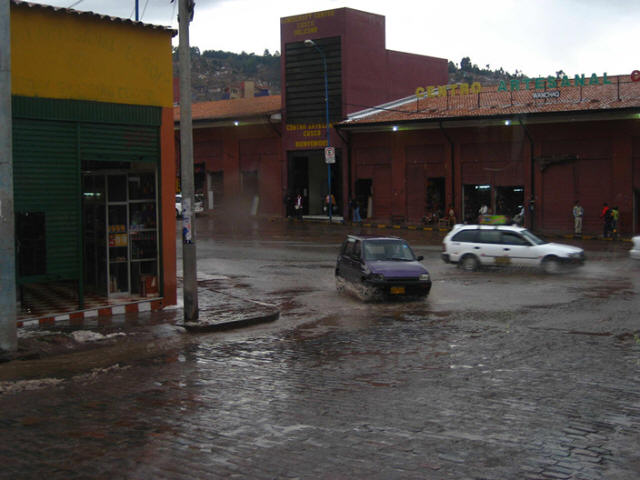
We visited the Cathedral which is very magnificent. We are surprised at the amount of Gold and Silver there is and the number of paintings and artefacts. This trend continued when we visited the San Blas district of Cuzco district up in the hills. They opened their church for us. From the outside quite plain but inside bling, bling, bling. Our guide explains that the Inca wealth provided the resources to make these buildings so overwhelmingly opulent.
Cuzco was the capital of the Incas and walls can be seen everywhere incorporated in the buildings. We went up another 500 metres into the hills to see some of the ruins of a religious complex they built.
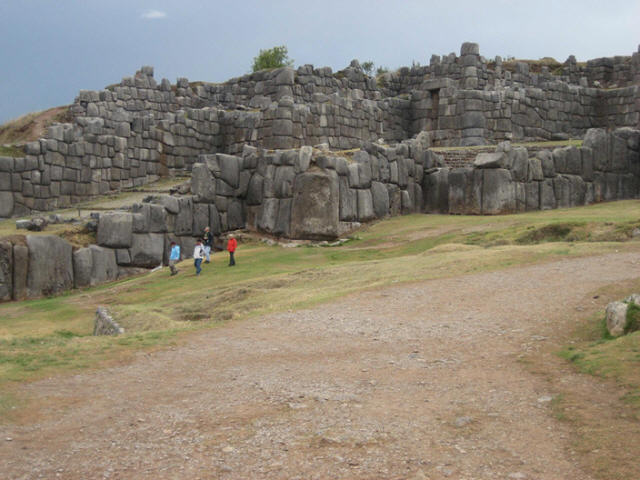
The archaeological site of Sacsayhuaman contains huge rocks weighing up to 300 tons, which are fitted together with absolute perfection including three walls running parallel for over 360 metres and 21 bastions. Sacsayhuaman was thought for centuries to be a fortress, but the layout and architecture suggest a great sanctuary and temple to the Sun, which rises exactly opposite the place previously believed to have been the Inca's throne and which was probably an altar.
Day 5 Out of the City
We headed off into the countryside and stopped at a small farm where we saw, identified and fed the various Llamas which inhabit the region.
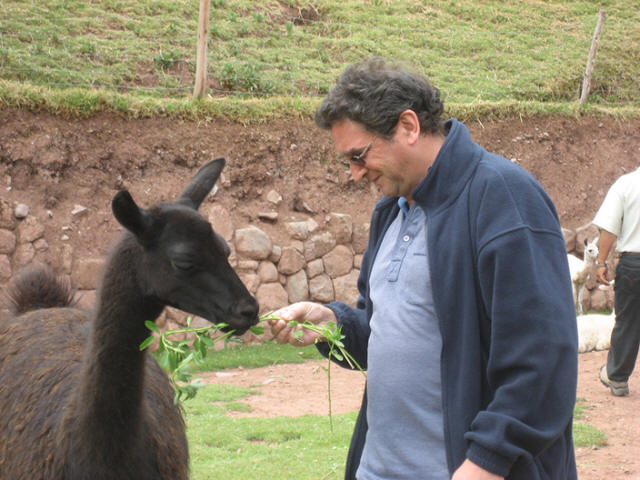
Then we continued towards Pisac. This town was of supreme importance in Inca times. It was the site of one of the most important fortresses built to guard the capital of the empire. The town of Pisac today is a sleepy hamlet of brown adobe buildings with faded red tiled roofs and narrow cobblestone streets. A mixture of Inca and colonial influences, parts of the town date from the colonial era. We visited the market and bought several scarves and CDs.
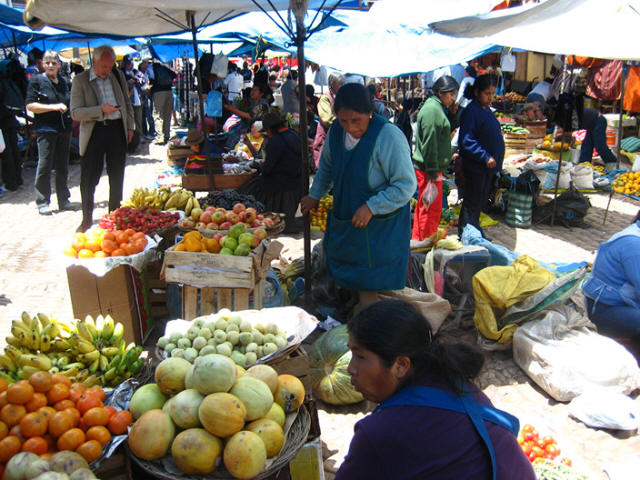
We passed into the Eastern side of Peru where all rivers flow towards the Atlantic. Lunch was a buffet at a smart hotel in a small town and then we continued through the wonderful scenery towards Ollantaytambo, a small town built around a superbly preserved Inca fortress. The fortress guarded the entrance to this part of the valley and protected it from possible invasion from the lower jungles. The central part of the ruins is the Intihuatana group of temples and rock outcrops which reveal the most magnificent Inca masonry. The design and foundations of the majority of the buildings in the town also date from the Inca era, when Ollantaytambo was a strategic military, religious and agricultural centre.
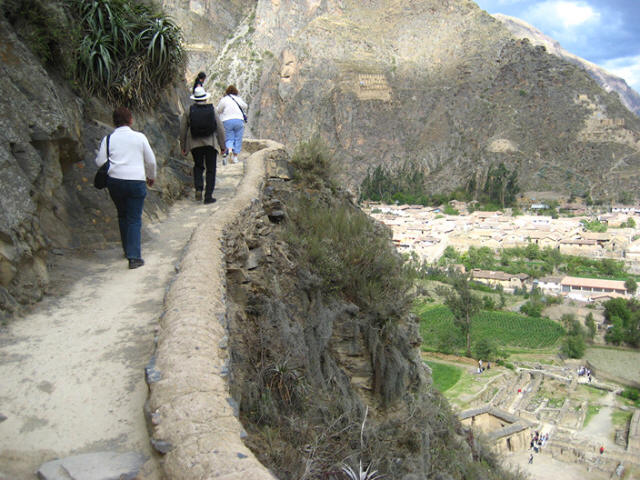
Although the ruins look ancient they date 'only' from the 1400s. The scale of the work here is gigantic. Rocks quarried from the opposite side of the valley were transported across, carried up and the fashioned into the structures we see today.
Day6 Machu Picchu
We took the train from Cuzco to Agua Caliente. The train leaves the natural bowl of Cuzco by a series of switchbacks and then descends towards our destination through the cloud forest heading North into the jungle. Agua Caliente is a charming town with a hippy village feel totally geared up to processing visitors to Machu Picchu. On arrival the next phase is to take one of the twenty coaches which go up and down to the mountain from 05:30 to dusk. It is a 30 minute journey with the usual sheer drops and hairpin bends. Backing up to let other coaches past on the narrow road adds to the fun.
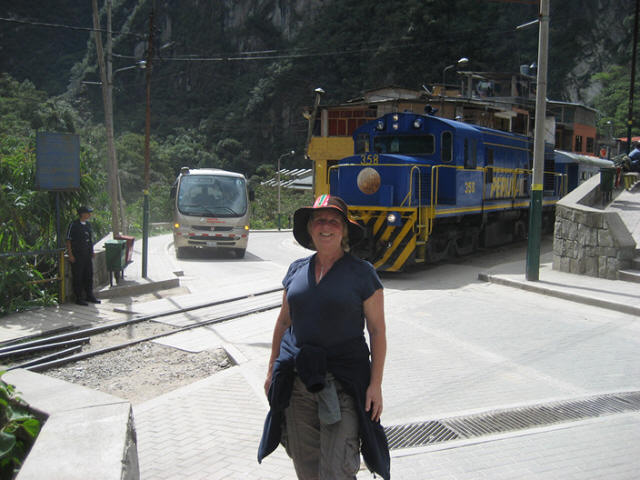
Our Guide Alvaro was superb, making sure we got the maximum out of our visit as well as lunch. He kept us away from the crowds which build up during the day.
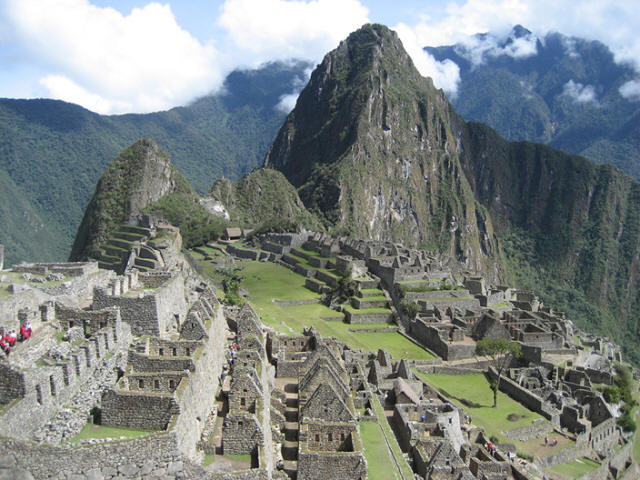
There is a lot to explore. The quarry is located within the complex and they used the natural faults in the rocks to break lumps off the mountain. Then these pieces were broken again and finally fitted into the jigsaw.
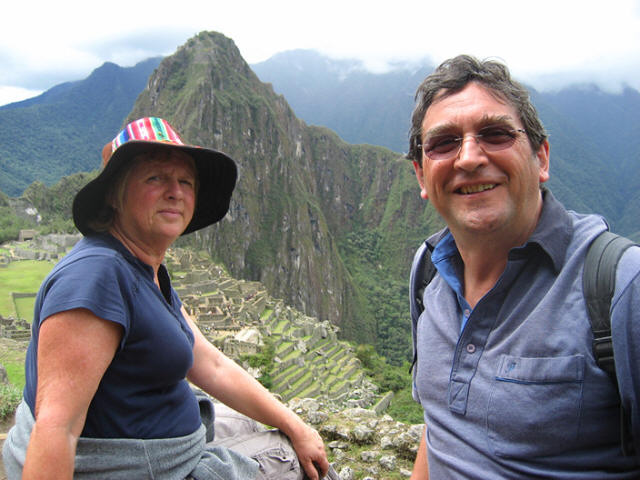
It seems the place was gradually abandoned. As the Spanish took a firmer hold of Cuzco and other cities, finding people to bring supplies here along the Inca Trail became more difficult and eventually impossible.
Day7 Machu Picchu
We take the chance to visit again by ourselves going early at 06:30. The cloud is very low at this time but soon burns off and by 8:30 we need sun block and rests in the shade.
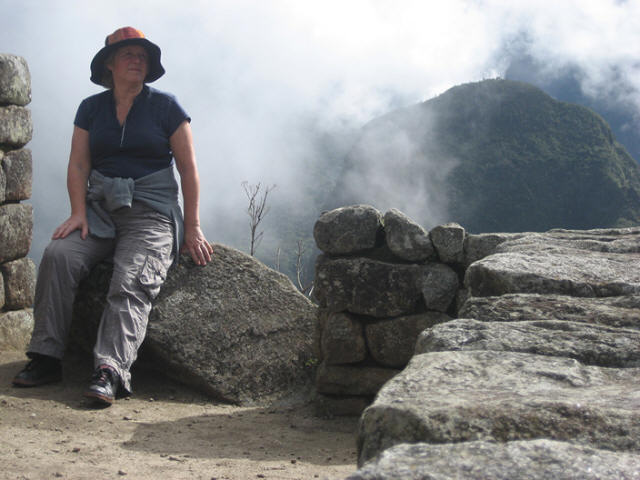
There are plenty of chances to use the Gorillapod which proves to be very successful.
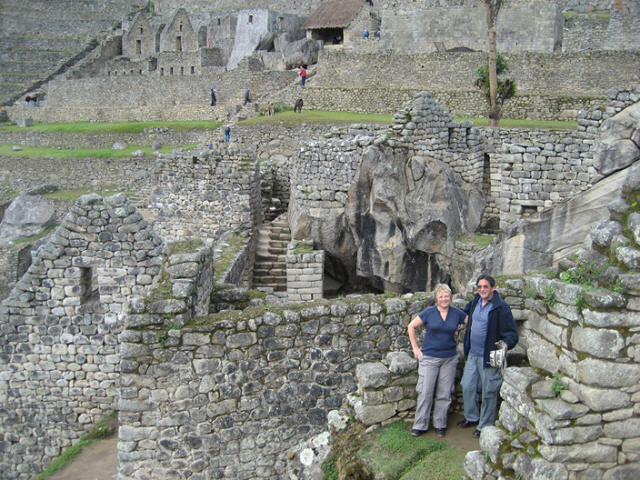
After our solo explorations we head out along the Inca Trail up into the moutains for about an hour only turning around when the trail turns a corner loosing sight of Machu Picchu.
At 5pm we take the train back to Cuzco.
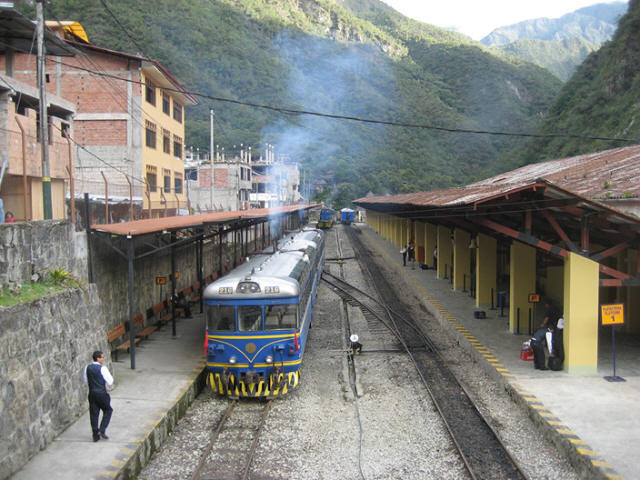
Day 8 Cuzco to Puno
Cuzco to Puno is 5 hours by road but we stop at some places of interest making it 10 hours. The first half of the journey passes through the gentler, rolling Andean Plains, where vicuna and alpaca may be seen and follows in the footsteps of the Incas to the shores of Lake Titicaca. We stop on the way at Chokepukio and Pikillactat, ruins built by the Huari people between 600 and 800 AD. One of the many storehouses has been restored and we go inside to be amazed at how cool it is, despite the blazing noon Sun outside.
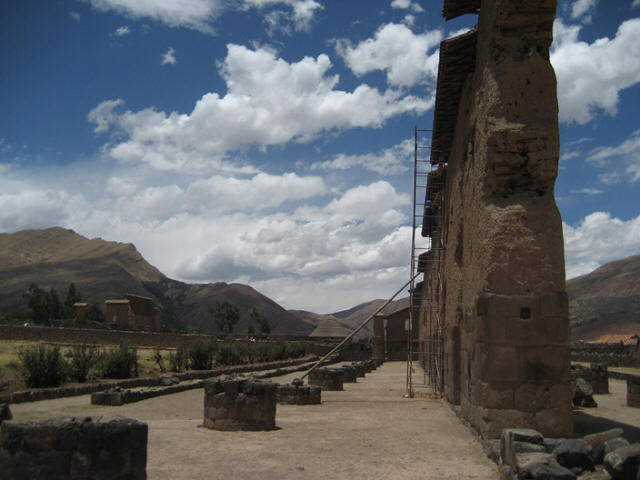
We climb up to over 14,000 feet at La Raya, the highest point on the route where a stop is made to see the snow-capped peaks rising to 18,000 feet.
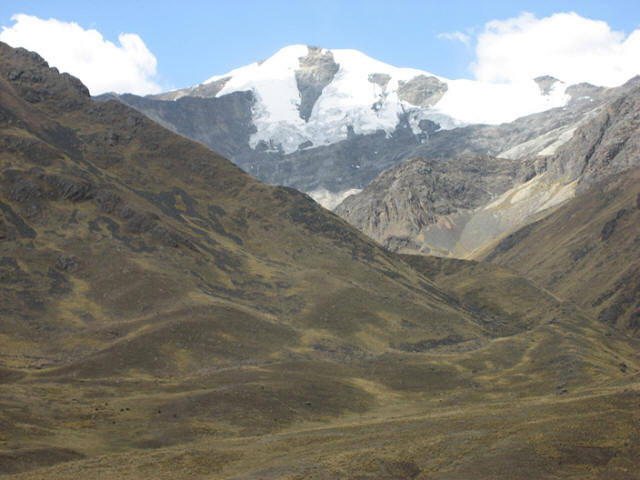
The last part of the journey is dominated by magnificent Andean mountains, towering over the deep valleys of the meandering Huatanay River. Situated at an altitude of 3,855 metres, Puno lies on the western shore of Lake Titicaca. The city serves as the capital of the Peruvian Altiplano and it is the centre of most activity in, on and around the lake.
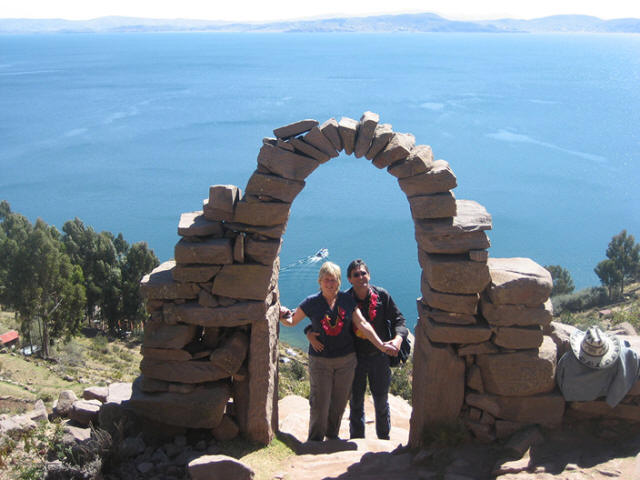
Day 9 Lake Titicaca
Our day on the lake starts by meeting this chap who lives on a floating island. He shows us his home made rifle which uses home made gunpowder.
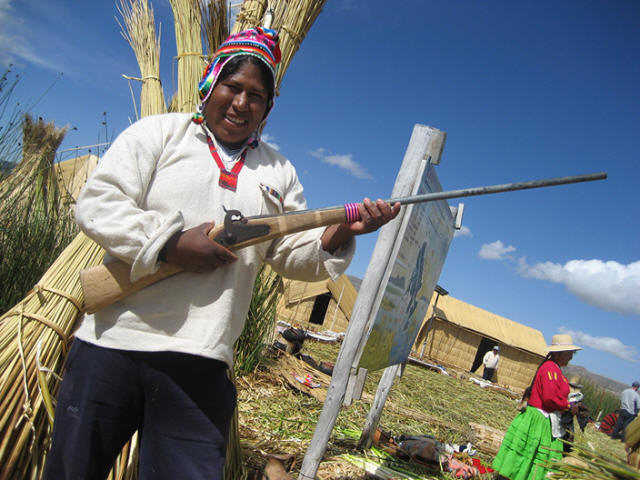
Then we sail for a real island to meet the farmers there and have lunch. The lake is the size of Wales and has quite a swell. We check out the local plants and learn how everything is used one way or another.
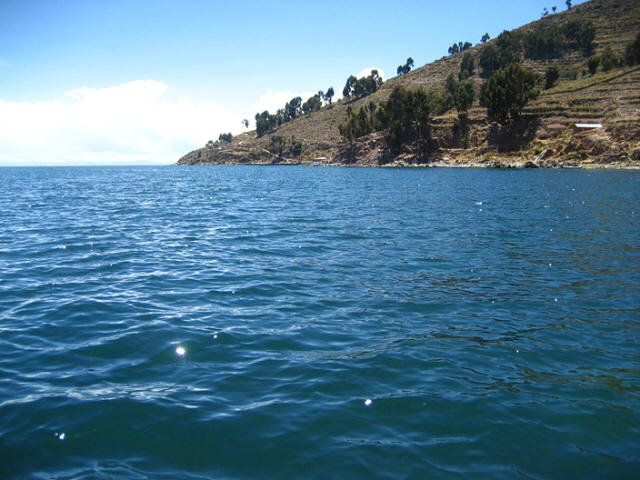
After a very good lunch we walk over the island to the other side where the boat will meet us. On the way we meet and talk to many of the locals who are carrying up their imports on their backs in the way it has been done for centuries.
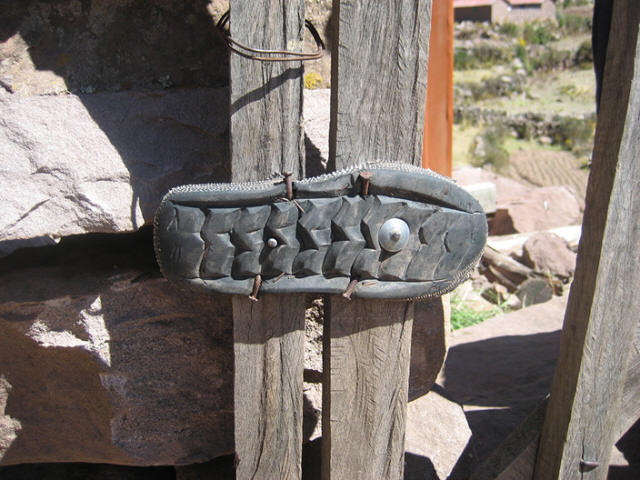
The rubber soles of broken sandals are reused as gate hinges. When they wear out they are then used as wedges.
Day 10 Home
We leave Juliaca Airport on our flight to Lima stopping at Cuzco which has an exceptionally long runway because the take off speed is greater than usual due to the altitude. Then we just return the way we came.

A fantastic trip but a big effort magnified by the altitude. We have now crossed the Himalayas off our list of future destinations.
And the end of all our exploring
Will be to arrive where we started
And know the place for the first time.
From Four Quartets by T.S. Eliot
PS But then in 2013 we changed our minds and visited the foothills. India and Nepal